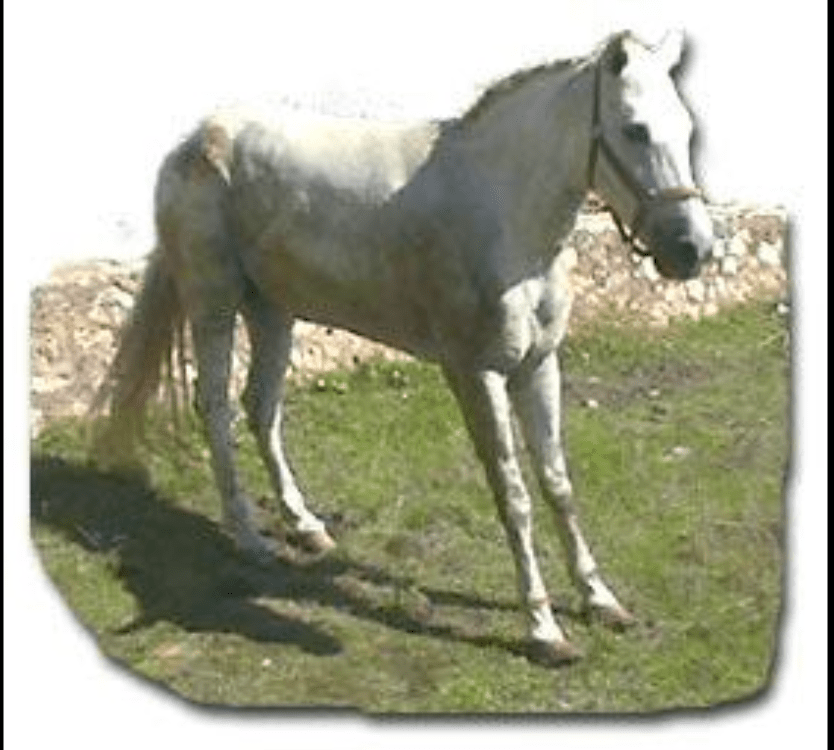Define lameness
Any ALTERATION or ABNORMALITY during any Normal Gait
Lameness is ___________ (voluntary or involuntary)
Voluntary
-The horse is avoiding pain
-There is restriction of movement
-The horse is trying to maintain its balance
What must you know about a horse which will help you better identify lameness?
Its normal
If both front legs are lame, the head may not nod at all. True or False
True
Why is early detection of lameness important?
- Benefits the horse
-Effective treatment
-Effective Management
-May prevent worse case
Why does a horse alter its movement when lame?
-Avoid Pain
-Biomechanical Restriction
-Maintain Balance
Name three causes of pain:
-Direct trauma (ex. fracture)
-Overstretched/tearing of tendons, ligaments, muscles
-Calcification/fibrous tissue resulting from trauma
-Inflammation (body's response to injury)
-Infection (area of heat and inflammation)
Mild or moderate lameness is best seen at which gait?
Trot
If the horse is lame in a hind leg, the hip that stays high/has the least movement is on the lame side. True or False
False - the hip that stays high/has the least movement is on the non-lame side
What information do we look for in the horse when determining if it is lame?
- Change in behavior
- Body language of the horse
- Grimace Scale
How is normal movement in a horse defined?
Regular and symmetric movement (both sides have the same movement)
What are three causes for restriction of movement?
-Changes in tissue strcuture (Most common - Fibrosis, thickening of the scar tissue)
-Failure - complete tear of muscle, tendon, ligament which leads to a change in the stride completely (ex. string halt)
-Nerve damage - muscle can not contract (ex. Sweeney)
This horse likely has ___________.
Laminitis
What happens to the foot arc in a lame horse if it is lame in a front limb?
There is reduced foot arc in flight. (The reduced arc in a hind leg is harder to see, need to look at the flexion of the hock and fetlock; horse may drag toe)
Name three facial markers of the Ridden Horse Pain Ethogram
-Eyes closed
-White of the eye
-Intense stare
-Mouth open/close
-Tongue out
-Bit pulled through
Where do you look for irregular movement?
-Head
-Neck
-Body
-Legs
What is key to a horse's balance?
Core stability - it provides strength and coordination of movement
Front leg lameness is best seen from....
The front or the side
What happens to the stride length in a lame horse?
It can be reduced.
What do we look for in the Grimace scale?
-Stiffly backward ears
-Eye tightening
-Tension above the eye area
-Strained chewing muscles
-Muscles strained
-Pronounced chin
-Flared Nostril
At the trot, a lame horse's head will raise/lower when the sore front limb hits the ground.
Raise
What can cause imbalance?
-Weak core muscles, hip/thoracic sling
-Poor footing
-Rider has poor balance
Hind leg lameness is best seen from ...
When a horse is standing, a high hip make indicate the lameness is on the opposite leg. True or False
True
Name three Body Markers in the Ridden Horse Pain Ethogram
-Head up/down
-head tilt
-Head above vertical
-Head behind vertical
-Head tossing, head side to side
-Tail position (crooked tail; clamped to midline)
-Tail swishing
The facial markers that show the greatest significant difference between lame and sound horses include: (Name at least four)
-Ears back
-Tipping the head
-Eyes partially or fully closed
-Tension around the eye
-An intense stare
-Open mouth with exposed teeth
-Being severely above the bit
A gait abnormality can be caused by:
Poor Conformation
Lameness
Tack
Rider
Improper Shoeing
Breed
All Lameness should be watched from.....
All angles
Name and describe three abnormal gaits:
Paddling (Winging out): feet move out and around when traveling
Winging In: swinging the foot in toward the other leg instead of traveling straight
Plaiting: placing one foot in front of the other
Name three gait markers in the Ridden Horse Pain Ethogram
-Rushed gait
-Slowed gait
-Moving on 3 tracks
-Canter dysfunction
-Spontaneous change of pace
-Stumble, trip, toe drag
-Changing direction, spooking suddenly
What are the categories of lameness?
-Inconsistent lameness
-Consistent lameness
-Primary lameness
-Secondary lameness
-Weight bearing lameness
-Non-weight bearing lameness
-Authentic vs Artificial lameness
What are the different causes of lameness?
-Concussion
-Interference (Ground, Conformation, Gait, Fitness of the horse)
-Nutrition
-Exercise
Name five things that could indicate the horse is lame:
-Not moving correctly/decreased performance
-Resistance to a direction or movement
-Sound of the footfalls is uneven-Aggressive behavior/Behavior problem
-Refusal
-PalpationWhy is the trot the best gait to evaluate lameness?
Because it is a two beat diagonal movement with a period of suspension between each beat.